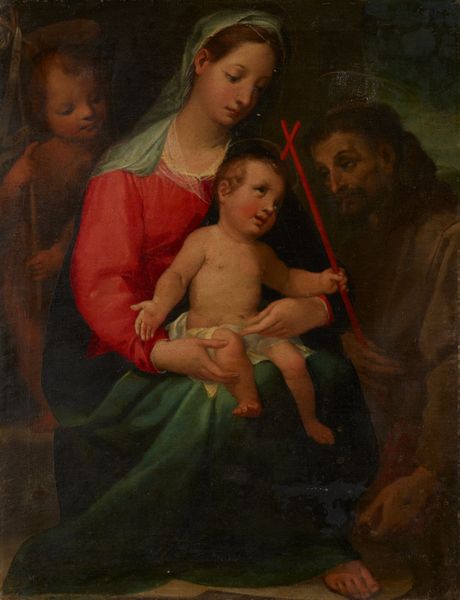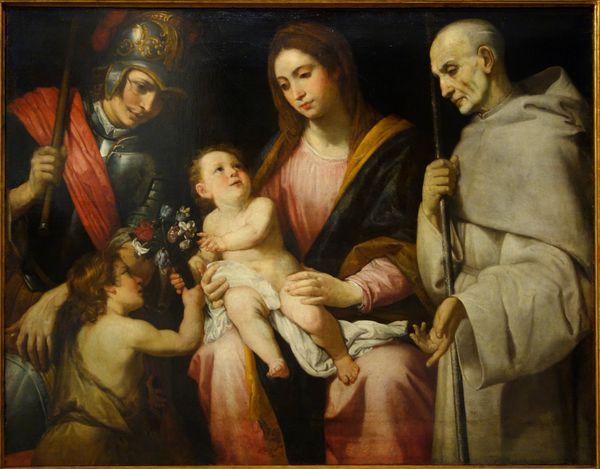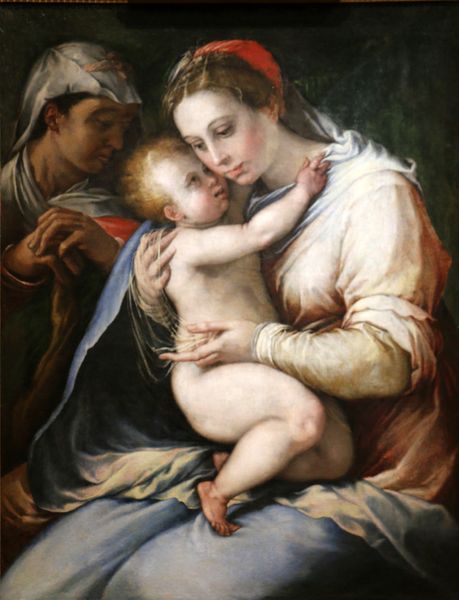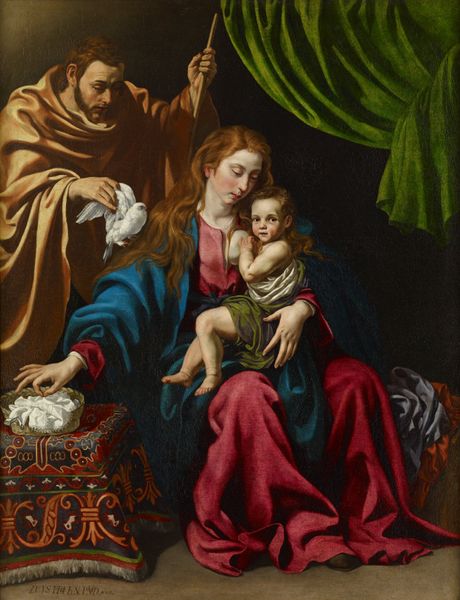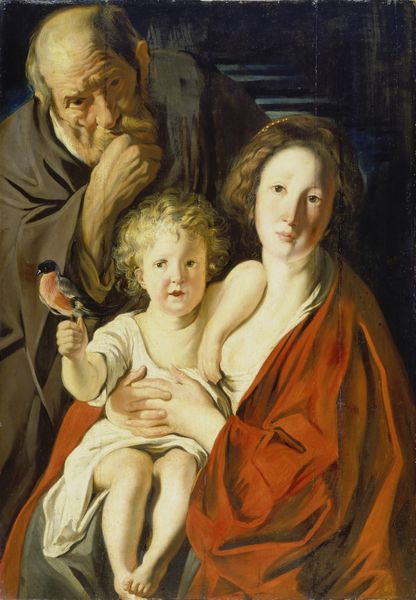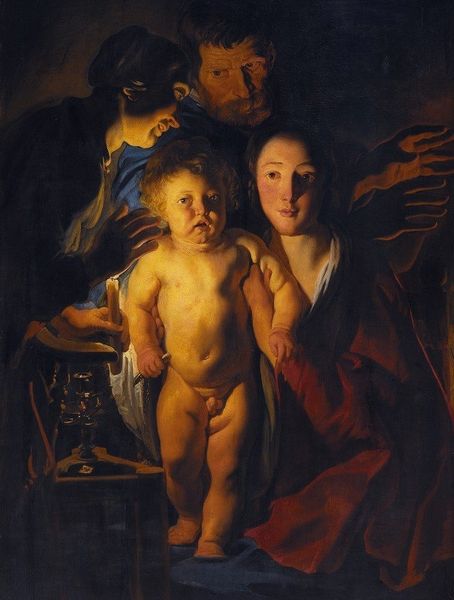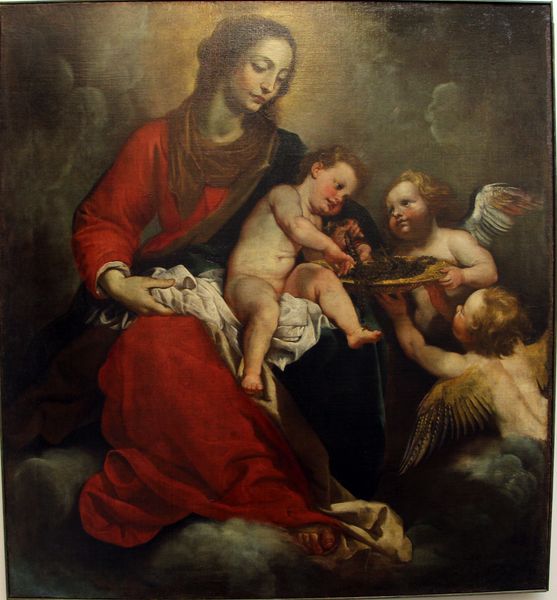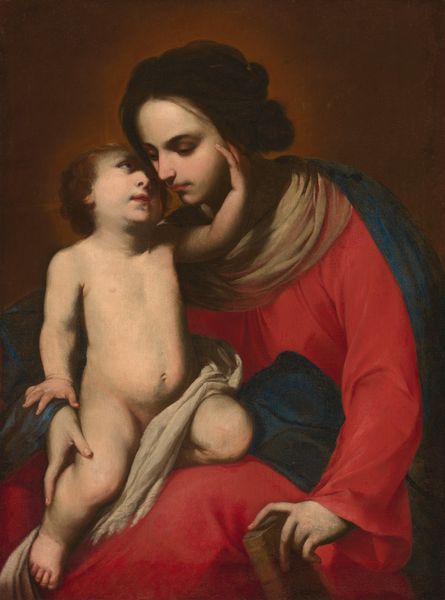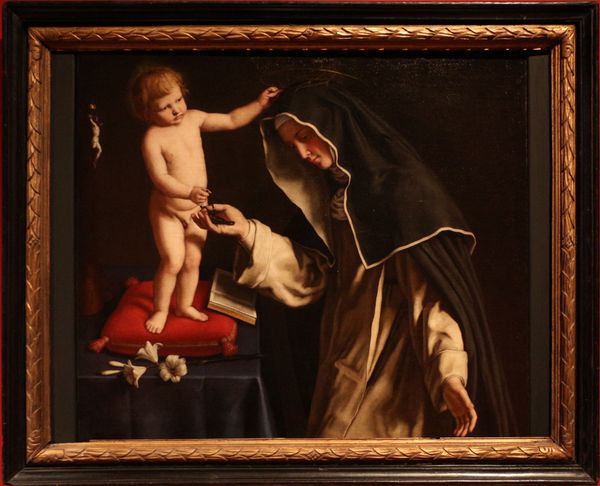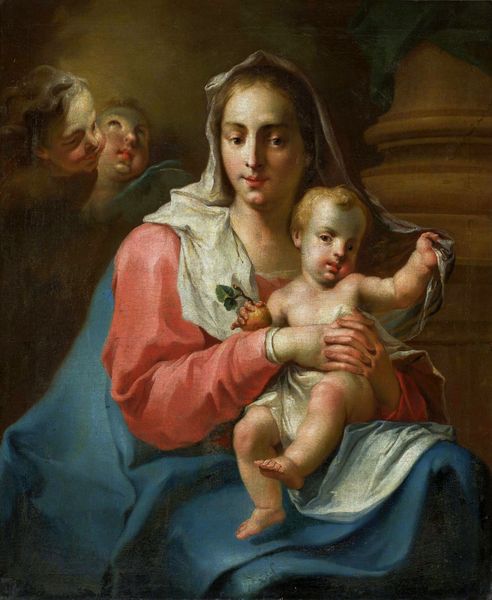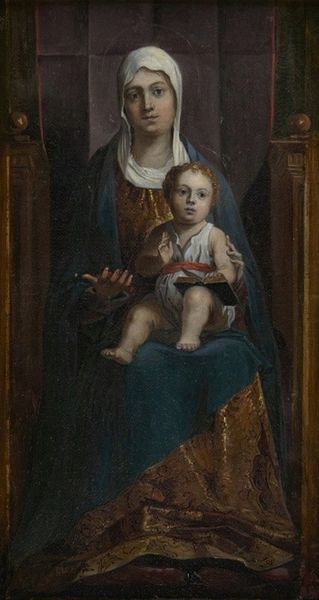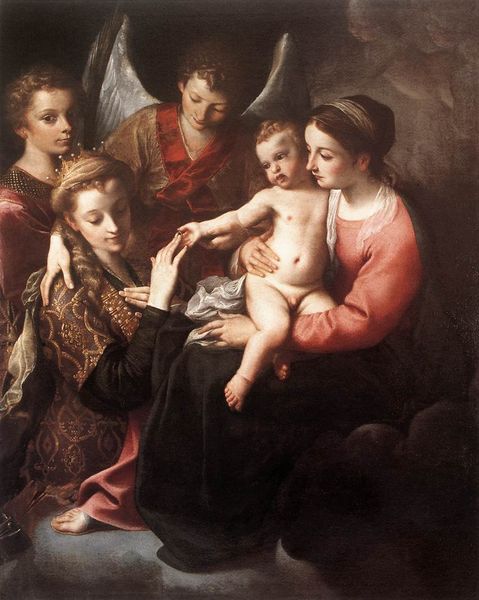
painting, oil-paint
#
portrait
#
baroque
#
painting
#
oil-paint
#
figuration
#
history-painting
#
italian-renaissance
#
nude
Copyright: Public Domain: Artvee
Caravaggio painted “Madonna and Child with Saint Anne” during his time in Rome. The period was marked by religious fervor and the Counter-Reformation’s call for art that spoke directly to the faithful. Here, Caravaggio radically departs from idealized portrayals, presenting the figures with a visceral humanity. Mary, in a low-cut dress, looks away from her son. Anne looks on, worn and knowing, representing a lineage of women marked by the weight of history and expectation. The Christ Child violently steps on the snake, a symbol of original sin, his gesture is awkward, almost violent. The painting, revolutionary for its time, was rejected by the church for its perceived lack of decorum and for representing the Virgin Mary as a common woman. Yet, it’s in this very realism that Caravaggio creates a powerful emotional connection. The figures are not ethereal beings, but flesh-and-blood individuals caught in a narrative of salvation and sacrifice, resonating with the everyday struggles of the working class.
Comments
No comments
Be the first to comment and join the conversation on the ultimate creative platform.

